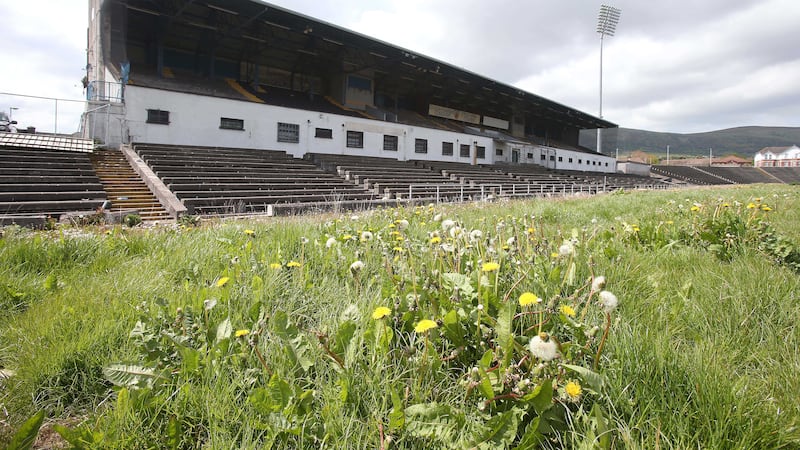AN emergency services assessment seen by Irish News has suggested only 18,000 people could safely evacuate a 38,000-seater Casement Park if the Andersonstown Road was closed.
Police, fire and ambulance officials also warn that in a 'worst-case' scenario just over 11,200 fans could safely exit if cars are parked on exit roads.
It is the latest twist in controversy surrounding the £77 million redevelopment project in west Belfast that has been plagued with problems and delays.
Last week the new president of the GAA's Ulster Council, Michael Hasson, told The Irish News there is "not a lot of give" in plans to accommodate 38,000 people at a new Casement Park.
A fresh planning application is expected in September, nearly two years after approval was overturned in the High Court when a judge identified failures in the environmental impact assessment.
A legal challenge was brought by residents who object to the size of the proposed stadium. They maintain the Andersonstown site can only cater for up to 25,000 spectators.
Click image to see full-size version
A Stormont inquiry is also continuing into safety concerns and whether the original proposals properly considered emergency exiting arrangements.
It came after a safety expert told MLAs the proposed design could not be evacuated safely in certain emergencies - and warned of the potential for a tragedy like the Hillsborough disaster, a claim dismissed by the GAA.
Concerns have focused on how the stadium would cope if the Andersonstown Road, where most spectators would exit the ground, was closed or blocked off.
Officials from the PSNI, ambulance and fire service together examined this scenario in January this year, documents uncovered by The Irish News reveal.
The assessment said: "The unique nature of the site indicates that it is reasonably foreseeable that the Andersonstown Road could be closed due to an emergency."
Examples cited were a suspect device, a fatal road crash or a gas leak, which could lead to an exclusion cordon of up to 400m being put in place.
If an incident happened, they warned that a 200m cordon could prevent spectators leaving via the junctions with Mooreland Park and Owenvarragh Park.
In the joint assessment, emergency officials calculated how many people could be safely evacuated if the Andersonstown Road was blocked – the 'emergency evacuation safe capacity'.
They examined the possible width of other exits and the impact of issues such as parked cars on residential streets surrounding the venue.
The assessment said the maximum emergency exit time for the stadium should be eight minutes.
However, their 'best-case' outcome allowed 18,264 people to be evacuated within the time frame, while the figure dropped to 11,239 in the 'worst-case' scenario.
"This does not account for funnelling which would occur along Mooreland Crescent, which would not be permitted and would also have to be designed out," the review said.
The 'preliminary planning assumptions' document was obtained by The Irish News through a Freedom of Information (FOI) request.
Officials also highlighted other issues with safety at the site in the event of an emergency.
Fire engines cannot access stadium entrances at Mooreland and Owenvarragh in various instances where cars are parked on both sides of the streets.
They also appear to dismiss a possibility that police could close the Andersonstown Road in advance of large matches.
"Existing legislation does not permit the PSNI to pre-plan to close roads to facilitate events in or on a public road. Therefore an event plan should not assume that this can occur," the document stated.
The paper was circulated and discussed during a meeting in January of the Safety Technical Group (STG), set up to advise on the plans.
The group concluded that without further information on the stadium design they were "not in a position to make any assessment of a safe capacity".
Ulster GAA plans to this week announce the beginning of a consultation on new plans for redeveloping Casement.
A spokesman said the proposed stadium's capacity has not been finalised.
"The capacity of the provincial stadium will be determined following completion of an environmental impact assessment, public consultation and consultation with statutory consultees and key stakeholders such as the Safety Technical Group, PSNI and others," he said.
"Until these consultation processes are complete and detailed environmental, transport and socio-economic assessments are complete the specific capacity for the provincial stadium cannot be determined."







